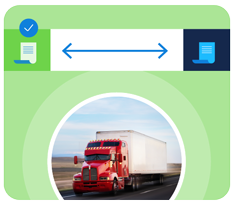Environmental, Social, and Governance (ESG) reporting has become increasingly important recently, particularly for organizations with extensive real estate and equipment assets and leases. Managing and reporting on the emissions component of ESG can be a complex and time-consuming task for many organizations, and this is where emissions analysis and reduction software comes into play.
Emissions analysis and reduction software helps organizations collect, analyze, and report on various data points, streamlining the process and ensuring the information is accurate and up-to-date. In this post, we will explore five reasons why organizations with real estate and equipment leases should consider implementing this type of technology.
1. Improve data accuracy and reliability
One of the primary challenges in emissions reporting is ensuring data accuracy and reliability. With leased assets spread across different locations and business units, collecting and consolidating data manually can be time-consuming and prone to errors. Emissions reporting software automates the data collection process, reducing the potential for inaccuracies and inconsistencies.
To boost the integrity of emissions data, it’s essential to deploy a robust system of controls from change management protocols and automated workflows to clear audit trails for emissions data sources and calculations, complemented by thorough user role management. This integrated approach effectively manages the entire lifecycle of emissions data, ensuring reliability and transparency from collection to reporting.
By leveraging advanced data validation techniques and integrating with various internal and external systems, emissions reporting software ensures that your organization’s data is accurate, reliable, and up-to-date. This, in turn, enhances the credibility of your ESG disclosures and strengthens stakeholder trust.
2. Streamline the reporting process
Getting emissions reporting right can be complex and resource-intensive, particularly for organizations with extensive leases. Asset-level emissions reporting software simplifies the process by providing a centralized data collection, analysis, and reporting platform.
With user-friendly dashboards and customizable reporting templates in our lease administration solution, your organization can efficiently track and report on a wide range of emissions metrics. Not only does this save time and resources, it also enables your team to focus on other strategic initiatives and value-add activities.
3. Facilitate compliance with regulations and standards
Organizations that operate across multiple regions face a variety of environmental regulations, including those set by the Securities and Exchange Commission (SEC), International Sustainability Standards Board (ISSB), and the European Union’s Corporate Sustainability Reporting Directive (CSRD). This complexity becomes specifically challenging for those that manage large portfolios of real estate and equipment assets. Financial penalties, reputation harm, and declining investor trust may arise from failure to comply with these rules.
Emissions tracking software helps organizations comply with these regulations and standards by providing built-in frameworks and guidelines for data collection and reporting. It should support key standards like the Global Reporting Initiative (GRI), Task Force on Climate-related Financial Disclosures (TCFD), and Sustainability Accounting Standards Board (SASB). This adaptability is vital for organizations aiming to provide comprehensive ESG disclosures, as it allows them to align their reporting processes with the most current and relevant standards, ensuring a seamless compliance experience.
4. Enhance decision-making and risk management
Effective emissions reporting is crucial for informed decision-making and risk management. By providing real-time insights into your organization’s performance, you can identify potential risks and opportunities, assess the impact of various decarbonization initiatives, and make data-driven decisions.
For example, this tracking can help you evaluate the energy efficiency of your real estate spaces, identify areas for improvement, and prioritize investments in energy-saving technologies. Similarly, the software can provide insights into the environmental and social risks associated with your equipment assets and leases, enabling you to develop proactive risk mitigation strategies.
5. Drive emissions performance improvement
Implementing emissions tracking not only streamlines your organization’s reporting process, it also drives continuous performance improvement. By providing a clear and comprehensive view of your organization’s emissions data, the software enables you to monitor progress against targets, benchmark against industry peers, and identify areas for improvement.
With emissions reporting software, you can easily track the effectiveness of various environmental initiatives, measure their return on investment, and adjust your strategies accordingly. This continuous improvement approach ensures your organization remains competitive, resilient, and well-positioned to capitalize on emissions-related opportunities.
Get started
As ESG factors continue to gain prominence in the business world, organizations that invest in emissions tracking as part of their lease administration processes will be better equipped to meet the growing expectations of stakeholders, seize related opportunities, and thrive in an increasingly sustainable and responsible market.
Get a demo of LeaseAccelerator today to see how we can help with emissions analytics and reporting requirements for your real estate and equipment leases.






